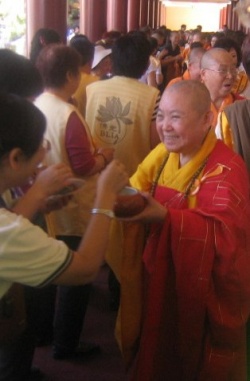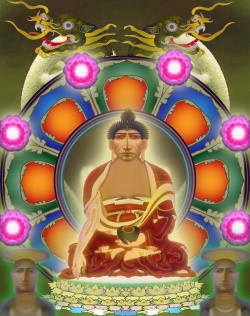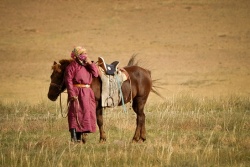Martial Arts: What's the truth?
- "All truth passes through three stages. First, it is ridiculed. Second, it is violently opposed. Third, it is accepted as being self-evident."
- - Arthur Schopenhauer (1788-1860)
True or False
Sometimes false things are remembered as true or vice versa, and sometimes things are incorrectly remembered. Studies have shown that, while people may remember information that they have read or heard, they tend to forget which information was true or from a reliable source, and which information was false or from an unreliable source. In laying down a memory trace, the human brain seems to encode the memory of the information separately from the context. For example, people may remember a quote but forget who said it or from where they obtained the quote.
The details of a memory begin to fade almost immediately, and the memory's context fades even faster. This means that while people may remember information, they tend forget where they obtained the information. So, people may remember some information about taekwondo, but they forget whether the information was obtained from a reliable source (such as TKDTutor of course) or from a movie, a game, a fictional book, or from a National Inquirer magazine that they read while waiting in line at the grocery store.
Studies have shown that unless people have some countervailing context to grab hold of, they tend to regard information that seems familiar as true. When remembering past experiences, people tend to remember what they thought was true at the time or what they have wished was true during the innerving years, rather than what was actually the truth. They are not purposely falsifying their memories, they are simply misremembering. As the years go by, as seasoned martial artists reminisce, the number of boards they broke at demonstrations tends to increase, the difficulty of their black belt tests increases, the higher their kicks were, and more famous people they have met. This means that you cannot trust your memory. That is why we have the printed word.
Possible or Impossible
You cannot always believe what you see and hear in the world. This includes what you see and hear during demonstrations by taekwondo "masters." Some of the things you see are true feats of skill that were developed through years of intense training. Some things you see are merely illusions. When you see something that first appears to be possible even though it seems to be impossible, be skeptical and make sure what you are seeing is really the truth.
Taekwondo is not spiritual or mystical. It is merely a method of self-defense. There is nothing magical about the techniques in taekwondo; they only demonstrate physics in action. Most martial arts demonstrations you see at tournaments or in the media are for entertainment and marketing. They show extraordinary athletes performing athletic feats that 90 percent of the public could never hope to achieve, even after years of dedicated training.
Many times, the demonstrations involve tricks or stunts that have been used by charlatans to fool the public for centuries. Some of these tricks are described below. These tricks should only be performed by well-trained professional adults with proper safeguards.
Breaking boards
Taekwondo uses board breaking as a way to build confidence and judge the power of techniques. Some standard tips for board breaking are to use wide pine boards with no knots, break with the grain, and use dry wood. Ways to make the boards break easier are to dry the wood and use spacers. The drier the boards, the easier they break. Boards may be dried by placing them in a oven with space around them for air circulation. Set the oven a low temperature, 150 to 200 degrees, and let them bake for as many hours as possible. For safely, keep constant vigil on the process. When breaking more than one board, place spacers (such as wood pencils) between the boards (one along each of two opposite sides aligned with the grain) to make the breaking easier. For example, when you break four one-inch boards stacked on top of each other, it is roughly the equivalent of breaking one 4-inch board. However, when spacers are used, you are breaking four 1-inch boards, one at a time, which is much easier.
Breaking burning boards
This is no more difficult than breaking the same boards without the flames. You are not in contact with the flames long enough to burn yourself and the charred areas are not hot enough to burn. Ever seen "tough guys" passing their fingers through the flame of a match, its the same principle. The skin in not in contact with the flame long enough for the heat to injure the skin.
Walking on hot coals
This trick has been used for centuries by magicians, street performers, and martial artists, and in recent years, by self-improvement gurus. If done properly, it is not dangerous. There are no flames, only hot coals evenly spread over a large surface. The coals are allowed to smolder until they have white ash on their surfaces. People then quickly walk over the coals with bare feet and are not harmed. The effect is not mystical, it has a scientific basis:
- The dry wood coals used by firewalkers conduct heat very poorly. The coal itself may be very hot but it will not transfer that heat to something touching it.
- The coals are a very uneven surface, and the actual surface area of foot touching the coals is very small. Hence the conduction of heat is even slower.
- Wood coals have a very low heat capacity, so although they are very hot there is actually not much heat energy to be transferred to the foot.
- Firewalkers do not spend very much time on the coals, and they keep moving.
- Blood is a good conductor of heat. What heat does get through is quickly conducted away from the soles of the feet.
- The "Leidenfrost" effect may play a part. This occurs when a cold, wet object (like a foot) touches a hot, dry object (like a burning coal). The water vaporizes, creating a barrier of steam between the hot and cold objects. Hence the two objects do not actually touch and evaporation from the cold object is much slower than might otherwise be expected. Since steam is a relatively poor conductor of heat the foot does not get burned. The effect can be seen in action by shaking droplets of water on to a hot skillet and watching the droplets bead up and dance around instead of instantly evaporating. It also explains how mom can touch a clothes iron to see if it is hot if she first licks her finger. Jearl Walker, of Scientific American's "The Amateur Scientist" column, explains the Leidenfrost effect in the August 1977 issue; he walked across coals unharmed and attributes this to the Leidenfrost effect. Other scientists believe that the Leidenfrost effect is unimportant in fire walking.
Here is another way to have fun with this. The next time you are at a party where cold beverages are being served, find a smoker. Press your thumb or fingertip against the side of your ice cold glass or can (it should be cold enough that it sweats). Then take the lit cigarette and hold it by the ends between the thumb and middle or index finger of the same hand. Be sure to put the lit end on the finger or thumb that was pressed against the cold glass. You will be able to hold it for several seconds without discomfort or damage. When it starts to warm up, grab it quickly and watch the look of amazement on people's faces.
Walking on broken glass
This is another old carnival trick. The edges of glass are what cut; so if you blunt the edges, there is less chance of getting cut. The old carnies broke some glass, removed the jagged pieces and shards, put the glass in a large canvas sack with some stones, and then rolled and shook the bag until the edges of the glass were blunted. Sometimes they even filed the edges by hand. The glass was then spread on an even surface and smoothed so no pieces were standing upright. When they stepped on the glass, it was with straight up and down steps, with firm even pressure, and with no other foot or toe movement. The martial art version of glass walking uses the same process except we have more modern ways to blunt the edges of the glass, such as by using a rock-polishing tumbler or a rotating cement mixer with some sand in it.
Lying on a bed of nails
This trick is very easily performed by anyone. If you push a nail into you skin, it will not penetrate until the pressure applied to the point of the nail is great enough to break through the skin. If you were to lie on one nail, the pressure would be great enough to penetrate the skin. If you were to lie on many nails, each nail would not have enough applied pressure to break the skin. The more nails, the less chance of harm.
Walking on broken glass
This is similar to the bed of nails. Use broken thick glass and lot of it. Walk slowly, stepping each foot down flat and then slowly apply weight. No one piece of glass as enough force applied to it for it to pierce the tough sole of the foot.
Dipping hand into molten lead
The molten lead is at about 800 degrees Fahrenheit but when done properly, the hand will not be injured. First dip the hand into water and the quickly dip the hand in and out of the molten lead. The water will turn to steam and insulate the hand from the heat. The molten lead will not cling to the hand so a quick dip will not burn the hand.
The "Leidenfrost" effect is what makes this possible. This occurs when a cold, wet object, such as a hand, if thrust into a hot liquid. The water vaporizes, creating a barrier of steam around the object. Hence, the object and the liquid do not actually touch, and evaporation from the object is much slower than might otherwise be expected. Since steam is a relatively poor conductor of heat, the hand does not get burned.
The effect can be seen in action by shaking droplets of water on to a hot skillet and watching the droplets bead up and dance around instead of instantly evaporating. It also explains how mom can touch a clothes iron to see if it is hot if she first licks her finger.
In a January 2010 episode of the Mythbusters television series, the hosts performed the feat. After some preliminary testing to ensure they would not be injured, each of the two hosts dipped their fingers into water and then quickly into and out of molten lead. They did not feel any discomfort.
Breaking two-by-fours on body
Have you ever seen a person break long two-by-four boards across another person's body. The strength of wood is in its compression. A two-by-four has tremendous strength when it is in compression, such as when used in walls to support the roof of a house, but it has weak lateral strength. Another factor involved in this trick, it the physics of levers. If a person is struck with the end of a board, injury will occur. If the board is long and strikes the person at a point on the board that is less than the midpoint of the board, the person's body will act as fulcrum and the board will break around the person's body with no injury to the person.
Standing on knives
This trick is dangerous, but if done properly, no injury will occur. When a sharp edge is pressed against skin, it takes great pressure for the edge to cut the skin since skin is very tough and pliable. However, if the edge is moved along the surface of the skin, it will cut with very little applied force. The secret to standing on knives is not to move while standing on them.
Pushing spear or arrow against throat
As stated before, skin is tough and pliable. The blunter the point on a spear or arrow, the more pressure is needed to penetrate the skin. If the shaft of the spear or arrow is designed to bend and/or break before enough pressure builds on the point to penetrate the skin, the performer is safe from injury.
Break chopstick on throat
All stunts are preceded with "patter," the superfluous words that attribute the premise of the stunt to some ancient oriental force that only true "masters" of the martial arts have attained. For this stunt, you might speak of yin and yang, weak and strong. "The chopstick is strong, but the throat is weak. With proper training, you may strengthen the throat until it may resist penetration." Then perform some "chi focusing" motions and noises, stare intensely, and place the chopstick to your throat, at top of the sternum in the hollow of the throat, holding it by the butt with it inside you fist. Then with a kiai, slap the top the fist to drive the chopstick into your throat and break the stick.
When performing the stunt, let the mark examine the stick. As you begin the break, use a couple of practice strikes atop of the fist holding the stick to let the mark see the motion. On the third strike, slap the fist hard and loudly, but twist the support fist so it bends the stick sideways and breaks it. The better the quality of the chopstick, the more care must be taken to in ensure the broken ends do not harm you. Stand facing the mark to hide the twisting/breaking motion.
Touching hot oil
A master pours clear oil into a pot or wok and heats it. When the oil boils, he touches his palm to the surface of the oil without being burned. A mixture of oil and lemon juice (much more juice than oil) is ported into the pot. The oil separates and floats on top of the juice. The juice starts to boil so it seems as if the oil is boiling. The oil is actually cooler than the juice. Then, just as quickly touching a wet finger to a iron to test it, quickly touch the oil with a damp hand.
Breaking blocks on chest
In this trick, a hard object, such as a concrete slab or a cinder block, is placed on the chest of a prone person and is broken by another person using a sledgehammer. The force a blow imparts to a person depends on the power in the blow and area over which it strikes. If the hammer were to strike the person, they would be crushed from the force. Since the hammer is striking another object that has a much larger surface area in contact with the person, the force of the hammer is spread out enough that no harm is caused to the performer. The large mass of the object also absorbs much of the blow. In assition, concrete is hard, but it is also brittle, which mean it shatters easily.
Lying between two chairs
In this trick, a person lies between two chairs with the shoulders resting on one chair and the heels resting on the other chair. Then another person stands on the person's torso or some object is broken on the person's torso. Again, the secret to this trick is leverage. With the body supported by the feet and shoulders, the torso may be held rigid rather easily. Imagine a line down the middle of the torso between the two support points with marks at the 1/4, 1/2, and 3/4 points along the line. The torso cannot support much weight placed on the 1/2 point of the line, but if a weight placed on the torso at the 1/4 or 3/4 marks, much greater weight may be supported with no effort.
Breaking ice blocks
Like wood, the strength of ice lies in its compression, it has weak lateral strength. A long block of ice will almost break under its own weight. The break may be made easier if a string is pulled back in forth across the ice block to melt the ice and then sawed down partially through the block. The ice will refreeze the cut so it is invisible, but the block will be weakened. Spacers may be used with multiple blocks to make the break easier.
Breaking a baseball bat with the shin
First condition the shin by daily rolling a hard rod up and down it. Kick the bat at the point the bat just starts begins its smallest diameter with a quick, powerful kick. The bat will break. The conditioning will help ease the pain.
Look up and try to open your eyes
Some claim they can put you into a trance. One way they try to convince you that you are in a trance, is to have you close your eyes, look upward, and try to open your eyes. Since your eyes will not open, it is claimed you are in a trance. Try it. As long as you are looking up, your eyes will not open. It has nothing to do with a trance.
Death-touch
Some claim to have a death-touch, the ability to touch someone in a particular spot on his or her body and cause sickness or death. This is false. There are areas on the body that are more susceptible to injury than other areas but it takes more than a touch or simple pressure to cause injury. Applying simple direct pressure to pressure points may cause pain, but not death, or even permanent injury. If you analyze death-touch claims logically you may ask, "How do you practice the technique?" If you perform it correctly, your partner is dead. If you practice it in some reduced form, then how would you know it would work when you need it and your life may depend on it working.
Grabbing coin from hand
Remember the old Kung-fu TV show where Grasshopper had to grab grains of rice from the master's hand. Sounds impressive! Instead of rice, lets try it with a coin. Have your victim hold a quarter in the palm of their hand. Hold your hand about eight inches above theirs and tell them that you can grab the quarter before they can close their hand. Stress how speed is important and how you have practiced for years. It can be very impressive if set up right. Offer to let them try first if they want. It may sound easy enough, but it is next to impossible if tried legitimately.
Here is how you do it: cup your hand, palm downwards, about eight inches or so above theirs. Instead of grabbing the coin, sharply strike their hand with yours. This will make the quarter bounce up into your hand. Do not be too overt about it; you want it to seem like a natural part of just grabbing the coin. Some people will think that the coin is still in their fist. If you want to make this a little more dramatic, ask them if they still have the coin before you open your hand to reveal your plunder. The technique will take a bit of practice but once you once you learn it, even when they see how you did it, you can still beat them.
Fighting more than one person
Contrary to demonstrations and movies, you cannot fight more than one attacker at a time, unless they each wait and take turns attacking you. If you have ever been in defensive situation, you know that you cannot react to an attack, especially one from behind, while defending against another attack. The law recognizes this. An empty hand attack against you by one person is a simple assault and you may use reasonable force to defend yourself. An attack by more than one person is considered an aggravated assault and you may use deadly force to defend yourself if necessary. If attacked by more than one person, you must be ruthless. You incapacitate each opponent you face so you will not need to be concerned with him or her while fighting the next opponent.
Bending straight pins
Another trick used to demonstrate strength and deference to pain is to push a straight pin with a head, used in sewing, on it into wood just enough so it stands upright and then slap your palm down on top of the pin. The pin will bend without penetrating the palm. Try it some time. The pin will always bend, and the pain will be minimal. If you slap the palm down on a flat surface just before slapping the pin, you will not feel the pin at all.
Push/pull a large vehicle
It would not seem possible for a regular person to push a large truck. If the person suddenly applied his or her maximum strength, the truck would probably not move. However, if the person pushes and continues to push for a period, the truck will gradually start to move. If the force is continuously applied over time, the truck's speed will gradually increase. The same principle applies to a stuck window in your home. If you quickly jerk the window, it stays stuck. However, if you apply a steady force over a period, the window may break loose. This is how a weak seedling is able to push its way out of the hard earth. It applies a weak force over a long period.
Tearing a phone book in half
The trick is to bend the book so the pages are spread out so you are actually only tearing a few pages at a time. Phone books and paperback books are "glue bound" with a common glue used to hold the pages to the spine. Grab the book in both hands along the spine with a gap between the hands. While keeping a firm grip, push downward with each hand while pulling them in opposite directions to break the spine. Now just keep pulling the two half apart and downward so you are ripping the pages instead of the entire book. This will not work if you try to tear from the non-glued side where the pages are open.
Bending a metal rod
Just as with pushing or pulling a large vehicle, one may bend a stiff iron bar by applying force over a period.
Secret arts
An excellent example of the way beginning, or even experienced, martial artists may be misled is the John F. Gilbey book Secret Fighting Arts of the World. Gibey claims to have traveled the world to find the world's most secretly guarded fighting techniques which he then describes in his book. Some of the legitimate techniques he describes are the Liverpool head butt, the Ganges groin grab, French Savate, and Mexican knife fighting. However, he also describes a Parisian who could project a belch ten feet in the open air and cause a man to faint. He describes a ninja who could take a full force blow across his forearm with a sharp sword without the skin being cut. The ninja could also stop another person's bleeding nose with a loud kiai. Another old master could silently leap to the roof of a house.
Gilbey also tells of seeing a man in the Reykjavik, Iceland passenger train station whose deflected punch left a quarter of an inch depression in a steel stanchion that it hit. There is no, and has never been, a train station in Reykjavik. The only train in Iceland's history was a small narrow gauge work train that only had one short rail line.
John F. Gilbey is actually a pen name of Robert W. Smith, a noted author and martial art teacher. In the late 1960's, Smith, along with fellow martial artists, Donn F. Draeger, Jon Bluming, and Jim Bregman invented a super martial artist from Reykjavik, Iceland named John F. Gilbey (the last name taken off of a bottle of gin).
Trickery is not just a modern occurrence
The Boy Conjurer from 1857 shows the bed of nails, rock broken on the body, Iron Bridge, bending nails, and many other stunts similar to the ones listed above. To read an 1895 account of the pseudo supernatural strength of the "Magnetic Girl, " click here.
Believe all the hype about psychics?
Your computer can read minds as well as they do.
More stunts
Anybody dumb enough to believe these will believe anything:
- http://www.youtube.com/watch?v=KJr2BdUTYkU
- http://www.youtube.com/watch?v=YdvYXIwa0Ow&feature=related
It seems that the more outrageous a claim is, the more people will believe it. If I told you I saw an old man suddenly leap to the top of building, people would say I was lying. However, if I also said the man was a grand master of Kung-fu, people would tend to believe it happened. If it seems unbelievable, then do not believe it until it is proved. The laws of physics and nature apply to everyone, even martial arts masters.












